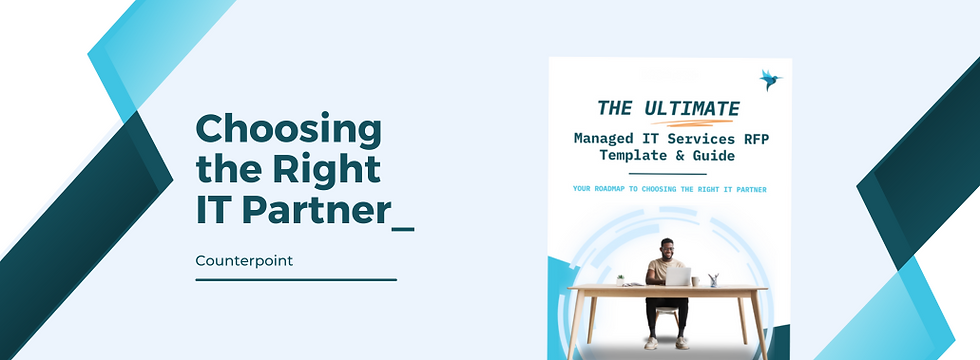
,
Choosing the right IT Managed Services Provider (MSP) is crucial for the success of your business. On the surface, MSPs can appear to offer similar services, but there are significant differences between those that provide essential support and those that deliver comprehensive, proactive solutions. A well-structured Request for Proposal (RFP) can help you identify which provider is truly equipped to deliver the level of service your business needs. This guide provides a comprehensive template that you can use to build an effective RFP, ensuring prospective MSPs understand your unique requirements and offer the best solutions.
Why an RFP Matters for IT Managed Services
An RFP helps you:
Outline your specific IT requirements.
Ensure prospective MSPs meet your business objectives.
Compare providers objectively.
Section 1: Company Background
Start by sharing essential details about your company:
Company name and location
Industry and services/products offered
Number of employees and office locations
Current IT setup overview
Section 2: Project Overview
Explain the scope and goals of the project, such as:
The need for managed IT services (e.g., support, cybersecurity, cloud solutions)
Key objectives (e.g., reducing downtime, improving security, ensuring compliance)
Desired outcomes
Section 3: IT Environment Details
Provide a clear picture of your current IT environment:
Hardware and software inventory
Number of users and devices
Types of operating systems used (e.g., Mac, Windows)
Existing network infrastructure and security measures
Section 4: Scope of Work and Deliverables
Outline the services you expect the MSP to deliver:
Proactive IT support and monitoring
Helpdesk services
Data backup and disaster recovery solutions
Cybersecurity management and updates
Managed cloud services (specify any cloud platforms in use)
Compliance and regulatory adherence
Training for staff
Section 5: Proposal Requirements
Specify what you want to see in the proposals:
Company overview of the MSP
Experience and industry expertise
Case studies or references
Certifications and partnerships (e.g., Microsoft, Apple, Cisco)
Details on team composition and senior-level consultants
Section 6: Pricing Structure
Request detailed pricing information:
Flat-rate packages vs. customised solutions
Hourly support rates for additional services
Onboarding fees
Licensing or software costs
Section 7: Evaluation Criteria
Explain how you will assess proposals:
Expertise in handling mixed IT environments (Mac and Windows integration)
Service Level Agreements (SLAs)
Response and resolution times
Customer service quality and feedback
Scalability of the MSP’s offerings
Section 8: Submission Guidelines and Deadlines
Include clear instructions on how to submit the proposal:
Format (PDF, Word document, etc.)
Contact details for submission
Deadline for proposals
Timeline for follow-ups or presentations
Conclusion
A detailed RFP ensures you select an MSP that aligns with your business's IT needs. Use this template to create your own RFP and simplify the process of choosing the right IT partner.
If you’re seeking tailored IT support for your business, Counterpoint specialises in managed IT services for a range of businesses including creative agencies, AEC firms, and business who have a mac-heavy presence. Contact us to see how we can elevate your digital presence.

Comentarios